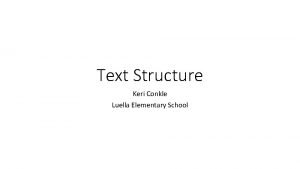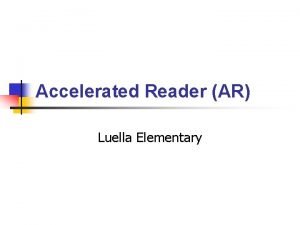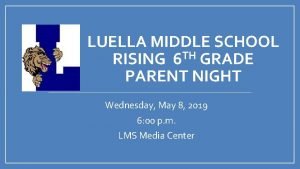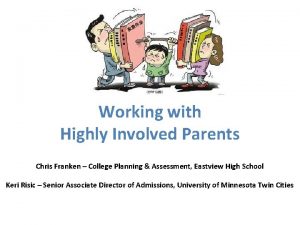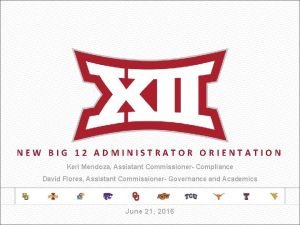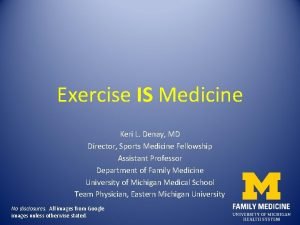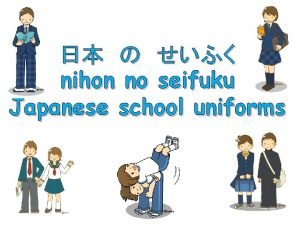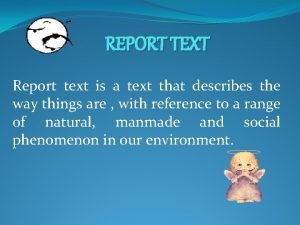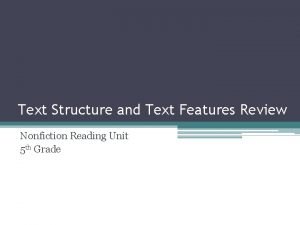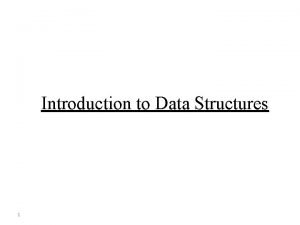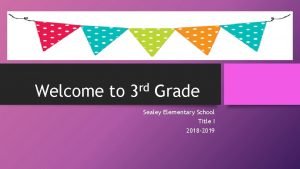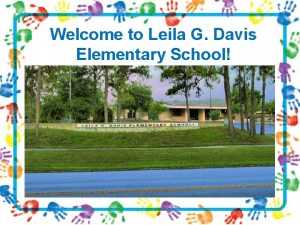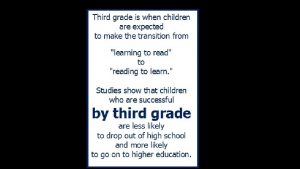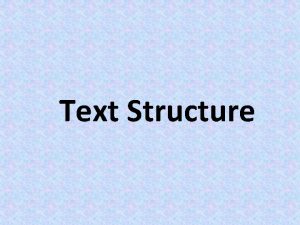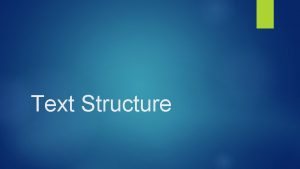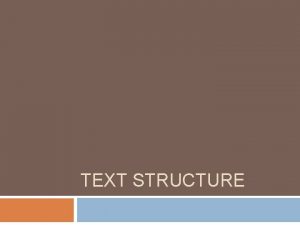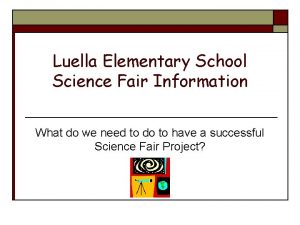Text Structure Keri Conkle Luella Elementary School What




















- Slides: 20

Text Structure Keri Conkle Luella Elementary School

What you should know and be able to do: • Describe the overall structure (chronological, comparison, cause/effect, problem/solution, description) of events, ideas, concepts, or information in two or more texts. ELA 4 RI 5

First let’s look at Text Features • Text features are to non-fiction what story elements are to fiction. Text features help the reader make sense of what they are reading and are the building blocks for text structure.

So what exactly are non-fiction text features? • Purposeful things added to a text to make it look better.

Special Features with Non-Fiction THESE NON-FICTION FEATURES ORGANIZE THE BOOK AND HELP READERS KNOW WHAT IS IMPORTANT • Captions: Help you better understand a picture or photograph • Comparisons: These sentences help you to picture something Example: A whale shark is a little bit bigger than a school bus. • Glossary: Helps you define words that are in the book • Graphics: Charts, graphs, or cutaways are used to help you understand what the author is trying to tell you • Maps: help you to understand where places are in the world

More Text Features • Illustrations/Photographs: Help you to know exactly what something looks like • Index: This is an alphabetical list of ideas that are in the book. It tells you what page the idea is on. • Labels: These help you identify a picture or a photograph and its parts • Special Print: When a word is bold, in italics, or underlined, it is an important word for you to know • Subtitles: These headings help you to know what the next section will be about • Table of Contents: Helps you identify key topics in the book in the order they are presented

What is text structure? Simply put, text structure is how the author organizes the information within the text.

Why do text structures matter to readers? • When readers know what kind of structure to expect, it helps them connect to and remember what they’ve read better. • It gives readers clues as to what is most important in the text. • It helps readers summarize the text. For example, if we’re summarizing a text that has a sequence/time order structure, we want to make sure we summarize in the same structure. (It wouldn’t make sense to tell an autobiography out of order. )

Examples of Non-Fiction Text Structure • Problem/Solution • Compare and Contrast • Description • Sequence • Cause and Effect

Problem/Solution • The author will introduce a problem and tell us how the problem could be fixed. There may be one solution to fix the problem or several different solutions mentioned. • Real life example: Advertisements in magazines for products (problem -pain; solution-Tylenol)

Cause and Effect • The author describes something that has happened which has had an effect on or caused something else to happen. It could be a good effect or a bad effect. There may be more than one cause and there may also be more than one effect. (Many times, problem/solution and cause and effect seem like “cousins” because they can be together. ) Real life example: A newspaper article about a volcano eruption which had an effect on tourism

Compare and Contrast • The author’s purpose is to tell you how two things are the same and how they are different by comparing them. • Real life example: A bargain hunter writing on her blog about buying store-brand items and how it compares with buying name-brand items.

Description • Although this is a very common text structure, I think it’s one of the trickiest because the author throws a lot of information at the reader (or lists facts) about a certain subject. It’s up to the reader to determine what he thinks is important and sometimes even interesting enough to remember. Real life example: A soccer coach’s letter describing to parents exactly what kind of cleats to buy for their kids.

Time Order/Sequence • Texts are written in an order or timeline format. • Real life examples: recipes, directions, events in history

• Sometimes the text structure isn’t so easy to distinguish. • For example, the structure of the text as a whole may be Description/List (maybe about Crocodilians) • But the author may devote a chapter to Compare/Contrast (Alligators vs. Crocodiles).

Which type of text structure? • Signal Words: such as, for instance, in addition, also, specifically • Description

Which type of text structure? • Signal Words: similar, same, alike, both, as well as, unlike, as opposed to, on the other hand, in contrast, instead • Compare and contrast

Which type of text structure? • Signal Words: first, second, third, then, next, before, after, finally, following • Sequence

What type of text structure? • Signal Words: since, because, if, due to, as a result of, causes, leads to, consequently, then, therefore • Cause and Effect

What type of text structure? • Signal Words: problem, issue, since, as a result, solution, idea, so, leads to, causes • Problem/Solution
 Luella elementary school
Luella elementary school Luella elementary
Luella elementary Luella high school dress code
Luella high school dress code Making connections images
Making connections images Keri risic
Keri risic Attorney keri johnson
Attorney keri johnson Keri mendoza model
Keri mendoza model Keri mans
Keri mans Keri mendoza
Keri mendoza Keri denay
Keri denay Keri kohler
Keri kohler Japanese school uniforms history
Japanese school uniforms history Report text structure and example
Report text structure and example Text structure vs text features
Text structure vs text features Elementary data organization in data structure
Elementary data organization in data structure Ubujan elementary school
Ubujan elementary school William beanes elementary school
William beanes elementary school Mckay elementary school
Mckay elementary school Sealey elementary school
Sealey elementary school Leila g davis elementary
Leila g davis elementary Wexford elementary school
Wexford elementary school
